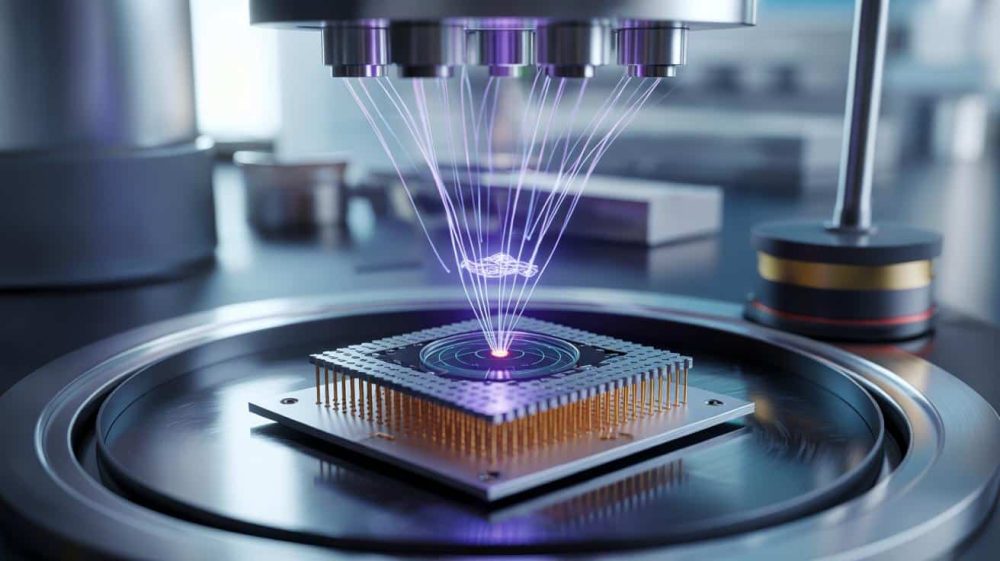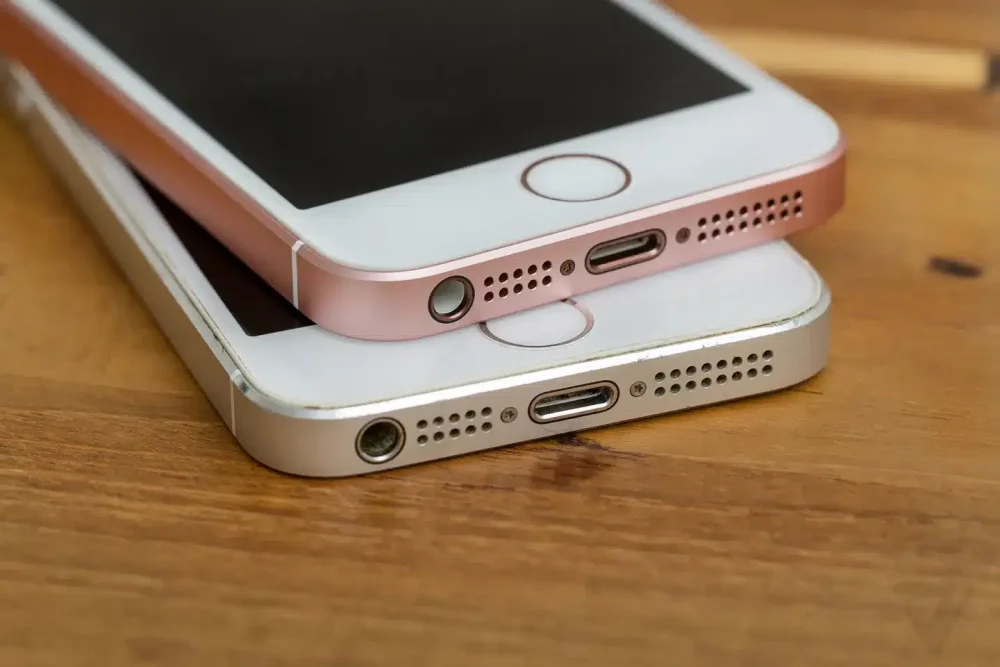Germany has achieved a world-first in quantum computing by integrating an ultraviolet optical system directly into ion-trap chips, removing one of the biggest practical roadblocks to scaling trapped-ion quantum computers.
As part of the SmaraQ project, partners QUDORA Technologies, Fraunhofer IAF, and AMO GmbH have demonstrated UV-compatible integrated photonics built right into an ion-trap architecture. This shift could eventually turn today’s fragile lab rigs into rack-ready quantum modules.
Why This Matters: From Forests of Mirrors to Waveguides
Traditional ion-trap quantum computers:
- Use individual ions as qubits, suspended above a chip in electromagnetic traps.
- Rely on precisely aligned lasers for:
- cooling
- state preparation
- logic gates
- readout
All of that light is usually routed via large optical tables full of mirrors, lenses, and beam splitters. As you increase the qubit count, the optics become increasingly complex. Each new ion means more beams, more alignment, and more potential failure points. Scaling becomes painful and expensive.
SmaraQ flips this model by routing light inside the chip:
- Engineers fabricate nanophotonic waveguides from:
- Aluminum nitride (AlN)
- Aluminum oxide (Al₂O₃)
- These waveguides:
- Carry UV laser light across the chip
- Fan it out via splitters and grating couplers
- Deliver tightly shaped beams directly to specific ion zones above the surface
Result:
No long optical paths, far less sensitivity to vibration and drift, and a platform that looks much more like something you can manufacture, ship, and maintain.
Key Technical Breakthrough
Core achievement:
Ultraviolet-capable integrated photonics co-fabricated with an ion-trap chip, able to address qubits with on-chip light routing instead of external beam steering.
Why AlN And Al₂O₃?
- High bandgap → low absorption in the UV range
- Compatible with wavelengths used for ions such as ytterbium, calcium, and strontium
- Suitable for low-loss waveguides, bends, splitters, and gratings at the nanometer scale
The structures they pattern are thousands of times thinner than a human hair, yet they can:
- Split a single UV input into multiple beams
- Direct those beams precisely to different trapping zones
- Shape output spots to match ion locations above the trap electrodes
Who Does What in SmaraQ
The SmaraQ project combines complementary strengths:
- QUDORA Technologies
- Leads system design and chip integration
- Integrates photonic networks into its trapped-ion architecture
- Targets commercialization beyond the project’s research phase
- Fraunhofer IAF
- Develops high-quality epitaxial AlN thin films
- Optimizes material properties for low-loss UV waveguides
- AMO GmbH
- Handles lithography and nanofabrication
- Turns AlN/Al₂O₃ layers into working waveguides, splitters, and couplers
SmaraQ is backed by the German Federal Ministry of Research, Technology, and Space (BMFTR) and is part of a broader European strategy to build a sovereign quantum supply chain, from materials to finished chips, without total dependence on non-European vendors.
What On-Chip Optics Fixes
Moving optics on-chip directly tackles some of the most significant practical issues in ion-trap systems:
- Stability
- No long optical paths = less sensitivity to vibration, air currents, and temperature drift
- Devices behave more repeatably from unit to unit
- Scalability
- The same waveguide network can be replicated across many chips
- Easier to move from tens to hundreds or thousands of qubits without adding endless mirrors
- Maintainability
- Fewer free-space components = less downtime from misalignment
- More like swapping a module than servicing a physics experiment
- Industrialization
- Chips can be produced via semiconductor-style processes
- Easier to package, test, certify, and deploy in data center racks
For users, that means a realistic path toward service-level agreements, predictable uptime, and quantum systems that fit into standard rack infrastructure instead of bespoke labs.
Roadmap And Remaining Challenges
Timeline:
SmaraQ runs through 2028, with milestones including:
- Low-loss UV waveguides and stable grating couplers
- Multi-zone addressing with low crosstalk
- Ultra-high vacuum packaging with long-term alignment stability
- Efficient fiber-to-chip interfaces and nearby control electronics
Engineering challenges still in play:
- UV charging of nearby dielectrics can disturb ions → requires careful materials and shielding
- Photodarkening and long-term loss drift → need robust passivation and process control
- Local heating from high optical power in tiny guides → demands good thermal routing and smart duty cycling
- Crosstalk between waveguides can introduce phase errors → needs isolation in layout and filtering
None of these are showstoppers, but they will decide how fast this tech moves from demo to deployable hardware.
How This Fits In The Quantum Race
SmaraQ’s integrated UV photonics arrives as other platforms also scale up:
- Superconducting qubits: surpassing 1,000 qubits in modular architectures
- Photonic processors: room-temperature chips accessible via cloud
- Neutral atoms: ever-larger Rydberg arrays ideal for quantum simulation
Where this German move stands out is that it directly attacks the most painful part of ion-trap scaling: optical control overhead.
If SmaraQ succeeds in delivering multi-zone, uniform, UV-integrated ion-trap chips with stable packages and decent yields, it could:
- Turn trapped ions from “beautiful but fussy lab systems.”
- Into standardized modules that cloud providers and HPC centers can actually deploy at scale
This is one of those advances that doesn’t look flashy to outsiders, no “10,000 qubits!” headline, but it’s precisely the kind of plumbing breakthrough that decides who wins long term. Germany’s SmaraQ move is a real shot at making ion-trap quantum computers boring in the best way: stable, repeatable, rack-mountable hardware. And that’s when things in quantum mechanics start to get really interesting.


